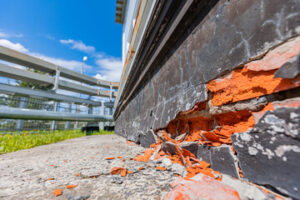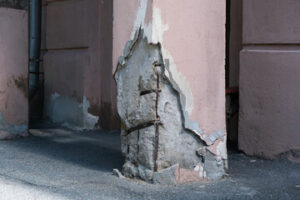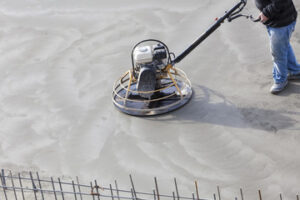Foundation Repair Greensboro NC addresses the underlying problems that cause structural damage to homes. Some of these issues include sticky doors and windows, buckling floors, and cracks in walls and ceilings.

Foundation repair addresses these problems to restore functionality to your home. It’s important to address these issues as soon as you notice them so that they don’t worsen.
Cracks in foundation walls are a common problem homeowners face. However, they don’t necessarily have to mean a home is in serious trouble. The best way to avoid structural damage caused by foundation cracks is to catch them early through regular inspection and maintenance.
Depending on how significant or severe the cracks are, it’s important to decide whether a repair is required or not. For minor cracks, there are a number of methods for repairing them. A good starting point is to inject a material such as epoxy or polyurethane into the cracks to fill and seal them. This will prevent moisture and pests from infiltrating the structure.
Small cracks that run vertically up and down are often the result of settling. These types of cracks are not a cause for concern unless they become wider than about 1/4 inch. Wider cracks, especially those that form in a diagonal or stair-step pattern, are usually a sign of a structural issue that needs to be addressed by a professional. Cracks that appear near doors and windows are also a sign of structural movement, and should be investigated.
Hairline cracks, which are less than the thickness of a penny, can sometimes be caused by weather changes. They may also be the result of shrinkage during the concrete curing process. If these types of cracks occur on the exterior of your home, they are a sign that you need to call in a professional for repairs.
Diagonal cracks are a sign of uneven (or differential) settlement and can indicate significant structural issues in your home. Uneven settlement occurs when some parts of your home settle faster than others, which can lead to pressure on the foundation and other structural components of your home. These cracks should be inspected by a professional immediately.
Significant gaps that allow water or moisture infiltration are a cause for immediate foundation repair. This may involve the injection of high-density polyurethane foam underneath the foundation to lift and level it, or a slab replacement with new poured concrete. Depending on the severity of the gap, additional reinforcement techniques such as carbon fiber straps or helical piers may be needed to stabilize your foundation and avoid future damage.
Water Infiltration
Water infiltration is a common concern that can lead to a range of problems. Aside from structural damage, it can weaken the overall integrity of your home, resulting in costly repairs and lower property value. It can also contribute to mold growth, which poses health risks for your family. Fortunately, there are steps you can take to prevent this problem.
The first step is to recognize the early signs of seepage. This includes noticing cracks in the foundation, especially those along a vertical wall. If you notice any of these issues, contact a professional immediately. This will allow you to avoid the more serious consequences of water infiltration, including moisture-related mold and wood rot.
A professional will conduct a thorough inspection of your foundation to determine the cause of the issue. They will likely recommend several different repair methods, including repairing cracks with resin injection, installing a sump pump or drainage system and sealing the foundation. Some of these repair methods are more expensive than others, but they will all restore the functionality and structural stability of your foundation.
If you’re worried about the cost of a foundation repair, be sure to get an estimate from a reputable contractor. The price can vary depending on the local labor and materials costs, as well as the method of repair. A reputable contractor will provide you with an accurate estimate and explain all the details involved.
Getting your foundation repaired as soon as possible will prevent serious damage and save you money in the long run. While DIY repairs may seem like an attractive option, complex issues require specialized expertise and tools that you may not have access to. Additionally, many professional repairs come with warranties, ensuring your peace of mind that the work will be done right.
In addition to repairing cracked foundation walls, a professional will also ensure the soil around your foundation is properly graded and drains away from the structure. They will install gutters and downspouts, ensuring they’re not clogged or overflowing, and extend them so that water drains at least 10 feet away from your home. They will also ensure the ground slopes away from your foundation and apply an exterior waterproof coating.
Structural Damage
Structural damage to a foundation can be more serious than wall cracks, and should be attended to immediately. Various factors cause structural damage, including expansive soils that push up and then sink the foundation over time, voids under the foundation that can’t support the structure, and soil that wasn’t compacted properly during construction. Some of these issues can be prevented, such as using drainage systems to prevent water build-up and grading the soil away from the home to keep it stable.
The best way to catch potential problems is by performing regular inspections. These can help to spot small cracks and other signs of damage before they have a chance to get worse. Frequent inspections also allow you to address problems promptly, which can save you money in the long run by preventing the need for costly repair work later on.
A common sign of structural damage is if doors and windows are hard to open or stuck in place. This can indicate that the foundation is shifting and putting stress on the rest of the house, which needs to be addressed as soon as possible.
Another sign of a problem is uneven floors. These can be caused by a number of issues, from simple settling over time to more severe structural damage. Moisture is a major culprit, as it can make the soil expand or contract, causing shifts in the foundation.
During repair, it’s important to make sure that all water sources are sealed, so that moisture doesn’t seep into the foundation. In addition, waterproofing techniques are important to curb moisture intrusion and related problems. The use of drain tile can prevent water from entering through the foundation walls, which can cause mold and mildew. Lastly, the use of polyurethane foam fills cracks and crevices to protect the structure from future damage. During a repair, a professional can install support piers in the ground around your home. This process involves digging and drilling into the ground, then pouring concrete to create bell-bottom piers. These piers are stronger and more durable than conventional pilings, and they can be used to lift the foundation and prevent further sinking.
Hire a Contractor
When you hire a contractor to repair your foundation, they take the necessary safety precautions. They also have the tools and knowledge to work safely.
A professional can quickly identify the root cause of your problem. What may look like a crack to you could be a symptom of a much bigger issue. Additionally, they have advanced tools and techniques to make the repairs as quickly and efficiently as possible.
They should be able to explain the problem and the proposed solution in a way that you understand. They should also be able to give you a written estimate that includes the cost and materials for the repair. A reputable contractor will stand by their work and offer a warranty.
The longer you wait to get your foundation repaired, the more costly it will be. This is because the damage will continue to get worse. Additionally, you may find that the damage has spread beyond the original area of concern. It is essential to get your foundation repair done as soon as you notice any signs of a problem.
Hiring a contractor will help you save money in the long run. Professionals have the tools and experience to fix your foundation quickly and efficiently. This will ensure that your home is safe for you and your family. Additionally, getting your foundation repair done early will ensure that you maintain the value of your home.
Many foundation repair companies use a variety of different methods to repair a foundation. This will depend on the extent of the damage and the type of soil in which your house is built. For example, if the problem is limited to one section of your foundation, it may be possible to shim or jack up that area. Other more extensive fixes may be needed, such as underpinning or helical piers.
It is important to choose a contractor that offers a variety of services. This will allow you to customize the solution for your specific needs and budget. In addition, choosing a company that uses patented technologies can significantly lower your costs. For example, Sure Safe’s helical pier system is up to 80% less expensive than other methods.

